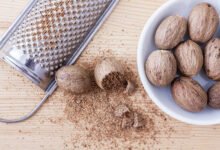Health Benefits of Bay Leaves

Sometimes people use the term “bay leaf” to refer to other varieties of leaves from similar trees.
The following are the varieties of bay leaves used to flavor food and the scientific names of the trees they come from:
- California bay leaf, Umbellularia californica
- Indian bay leaf, Cinnamomum tamala
- Indonesian bay leaf, Syzygium polyanthum
- Mexican bay leaf, Litsea glaucescens
- West Indian bay leaf, Pimenta Racemosa
- Turkish bay leaf, Laurus nobilis
This article focuses only on the more commonly used bay laurel leaf from the Laurus nobilis. Since the other types of bay leaves come from other tree species, they have slightly different flavors and nutritional properties.
Health Benefits
While many claims are made about the health benefits of bay leaves, not all have been proven. nutritional and pharmaceutical research indicate varying degrees of effectiveness of bay leaves for the following purposes:
Antibacterial effects
In lab studies, bay leaves have been found to have antibacterial properties, which means they stop bacteria from growing near them. More specifically, bay leaves inhibit the growth of both Staphylococcus aureus (the bacteria behind Staph infections) and E. Coli. An early lab study also shows that bay leaves fight off H. Pylori, a bacteria that causes ulcers and even cancer.
Blood sugar health
One study found that consuming capsules of ground bay leaves can decrease blood sugar levels in people with type 2 diabetes. More research is needed to determine if this effect is present when people consume much smaller quantities of bay leaves — a recipe serving four to eight people may only call for one leaf, after all.
People who don’t have diabetes experience lower blood sugar levels after eating a meal when they’ve also consumed bay leaves.
Cancer prevention and treatment
Early laboratory cell research shows that bay leaves slow the growth of breast cancer cells and colorectal cancer cells. Further studies are needed to understand how effective bay leaves are at helping cancer patients.
Nutrients per Serving
Typically, people cook meals using bay leaves to impart flavor, but don’t actually eat the leaves. However, bay leaves are also sold in a dried, crushed form that can be eaten. Nutrients from bay leaves are more likely to be absorbed when the crushed form is used in cooking.
A tablespoon of crushed bay leaves contains:
- Calories: 5.6
- Protein: Less than 1 gram
- Fat: Less than 1 gram
- Carbohydrates: 1 gram
- Fiber: Less than 1 gram
- Sugar: Less than 1 gram
Bay leaves also contain small amounts of many vitamins and minerals. The most prevalent are:
- Calcium
- Copper
- Iron
- Magnesium
- Manganese
- Vitamin A
- Vitamin B6
- Vitamin C
- Riboflavin
- Zinc
How to Prepare Bay Leaves
Most commonly, people cook with bay leaves by placing full, dried leaves inside a dish before cooking so that the food absorbs their flavor. Unfortunately, this method of preparation isn’t the most nutritious because people do not typically eat whole bay leaves.
Seasoning foods with crushed bay leaves is the best way to gain their full nutritional value. Dried, crushed bay leaves can be found in the spice and seasoning sections of most grocery stores. They can also be prepared at home by grinding full, dried bay leaves.
Blended fresh bay leaves can also be used in food, though that method is less common. Fresh bay leaves have a much stronger flavor, so a smaller amount should be used.







